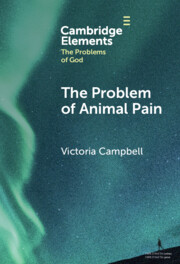Element contents
The Problem of Animal Pain
Published online by Cambridge University Press: 15 January 2024
Summary
- Type
- Element
- Information
- Series: Elements in the Problems of GodOnline ISBN: 9781009270717Publisher: Cambridge University PressPrint publication: 01 February 2024



